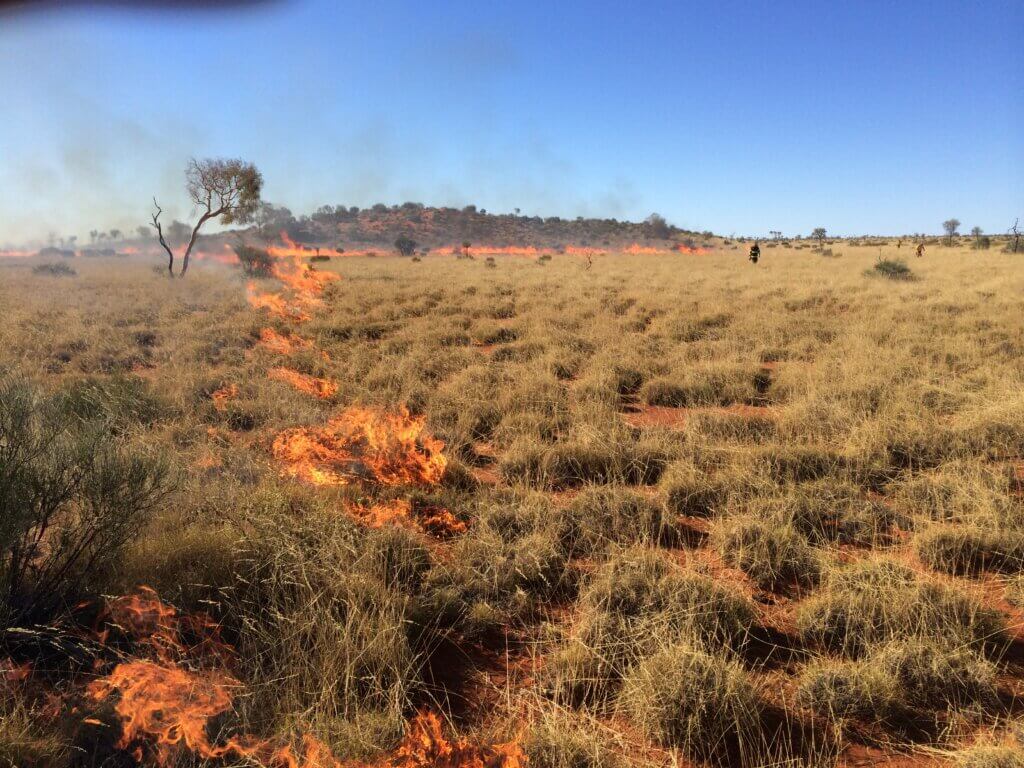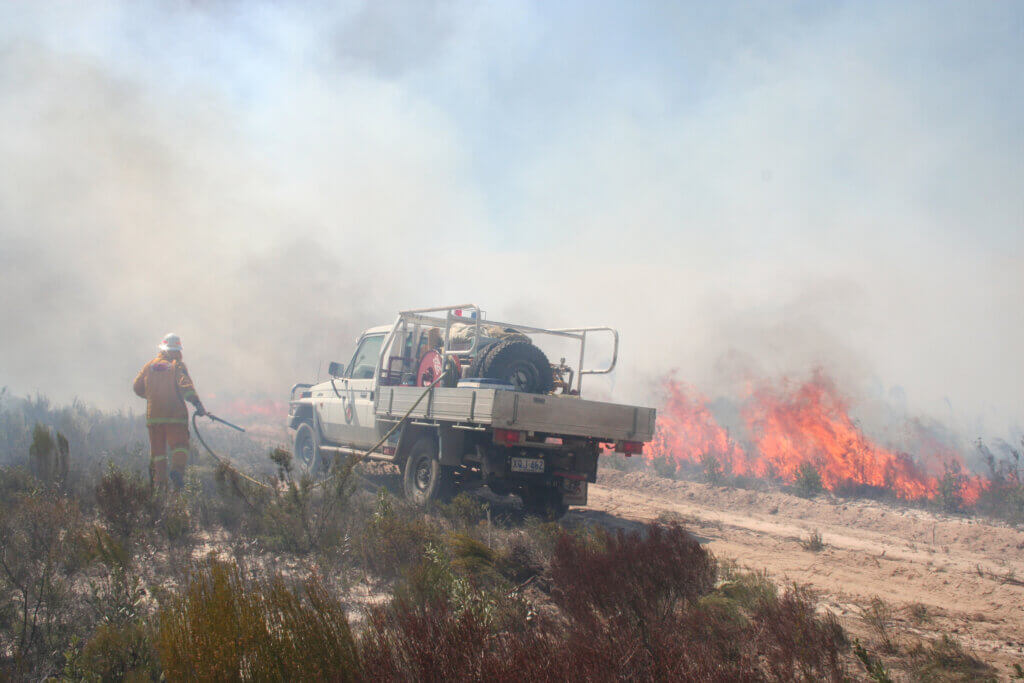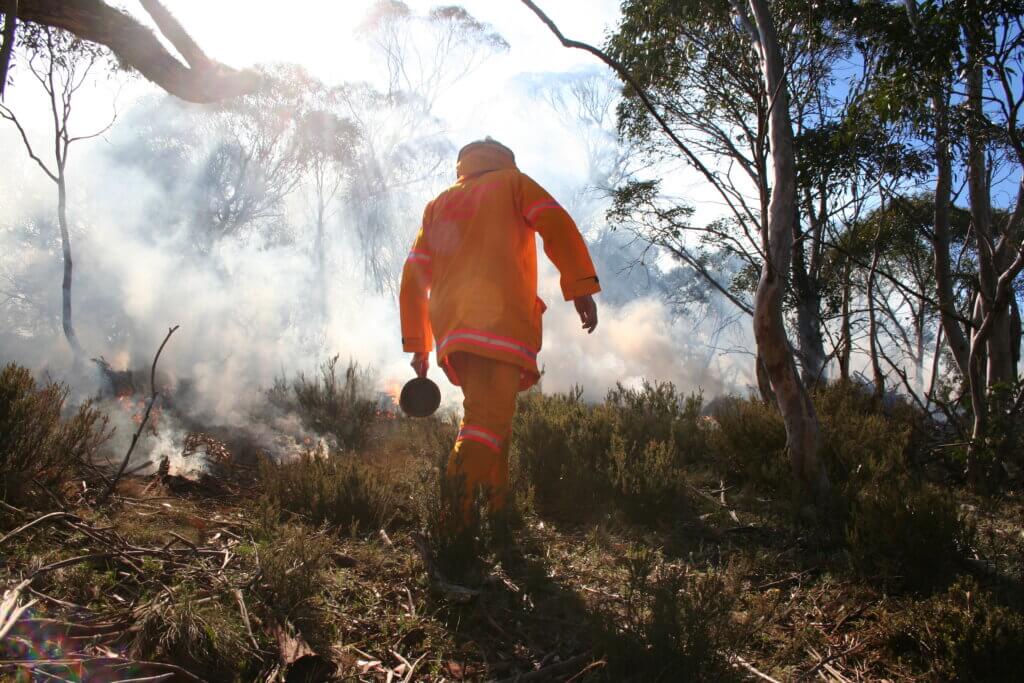AUSTRALIA
FIRE-STICK FARMING
BY ADAM LEAVESLEY, DAVID BRUCE, NAOMI STEPHENS, TREVOR HOWARD, SARAH HARRIS, AND ALEN SLIJEPCEVIC
Australian landscapes were managed with the firestick for thousands of years until the practice succumbed to colonisation by European settlers beginning in 1788.
Until recently, many Australians chose to describe traditional Aboriginal fire practice as lost, but the reverence and joy observed in Aboriginal people today when they meet together, walk on country and apply the “right fire” to the landscape shows that perception to be mistaken.
Caring for country, caring for resources, caring for family and meeting spiritual obligations can all be achieved with the right fire and this has become a clarion call across Australia – from Tasmania to the Top End and from Byron Bay to Steep Point.
In contrast, the colonising Europeans came from a green landscape in which fire was rare and destructive.

The European way of life transplanted into Australian landscapes brought dwellings fixed in place, domesticated livestock and fences in a landscape that was prone to fire and flood.
To the European settlers fire was anomalous, something to be prevented and suppressed.
Prescribed burning regulations across most of Australia today owe little in their conception to the good work that can be achieved when fire is skilfully applied to the landscape, instead focussing on containing the risk and holding the practitioners personally accountable for escapes.
Australian courts are unlikely to find landholders responsible for heavy and dangerous fuel loads that feed large, severe bushfires (wildfires), but at the same time whoever ignites a prescribed burn is responsible for that burn and is held accountable for any damage it might cause.
Another key factor in the use of prescribed fire in Australia is the entrenched attitudes to burning derived from the decades-old forest wars that have pitted the people and communities seeking to make a living from forests against the environment movement.
Burning has long been a part of the management for extractive use of native forests for timber and stock feed in southern Australia, and Aboriginal people will tell you they showed the foresters and farmers how to do it.
Many years of inquiries and government reports – amplified by media headlines – have told much the same thing, that prescribed burning is an essential function of management.

Photo by David Bruce.
But this is often strongly opposed by the environment movement who fear that high frequency burning is incompatible with the maintenance of biodiversity.
Both sides in this battle select the science and evidence of practice to support their positions and the debate is often at cross-purposes, proceeding in opposing narratives that do not engage with opposing points of view.
Deliberate burning for asset protection and public safety can be complex, producing smoke, affecting air quality, disrupting traffic and community events, and leaving a blackened landscape where people have chosen to reside and recreate.
The upshot is that forest burning in heavy fuels in the more densely settled and regulated south often lacks a clear, strong social licence.
The combination of the effects of regulation and the variation in landscape factors mitigates against liberal use of fire where risks are higher so that the biggest, best, most varied, and adaptable burning programs are all found in remote locations with few human assets and generally light, fast-growing grassy fuels.
Arguably, the most functional and effective landscape burning program in Australia occurs in the Eucalyptus tetradonta savannah woodlands in northern Australia, right across the continent, north of the 600-millimetre isohyet.
The program was established by resourcing Aboriginal traditional landowners to burn country in the tropical savannahs by delivering a body of science that demonstrates a reduction in carbon emissions by re-kindling the tradition of landscape fire management.
Emissions are reduced by burning the cured grasses in the early dry season when conditions are mild so that the flame remains close to the ground.
The canopy is preserved and the Eucalyptus tetradonta saplings are singed but nonetheless survive and grow, accumulating carbon.
Remotely sensed fire mapping is used to calculate the difference between the total emissions produced for a reference period when burning was not conducted and the total emissions produced each year follow the late dry season bushfires.
The difference is used to generate credits that are sold on the carbon market.
The suite of risk management, social, ecological and resource benefits derived from the program is attractive to sponsors who are enthusiastic to be associated with the project.
Aboriginal ranger groups follow the advice of elders in choosing where and how to burn but use modern techniques such as geographic information systems, helicopters, aerial incendiary machines, ultra-light tankers such as the Toyota Landcruiser and leaf blowers to effectively cover a vast area of the tropics.

Photo by David Bruce.
As the program has met with success, government agencies, pastoralists and environmental non-government organisations have combined their holdings in large tenure-blind blocks working together to deliver better fire management.
The program is being exported to Botswana in southern Africa via an Australian government aid program and the United Nations University.
The contrast between the prescribed burning programs of the southern forests and the tropical savannahs is stark.
It is curious that public support for prescribed fire in the tropical north has inflamed the imagination of the Australian public and been exported to the world as an example of great Australian innovation and ingenuity, while analogous systems in the southern forests are often viewed with suspicion.
The 2019-2020 fire season in eastern Australia has left some forests burnt to stumps and it has been an increasingly common occurrence since the Canberra fires in 2003.
A careful program of burning in forests in advance of bushfires delivers much the same outcome as the program in tropical northern Australia.
The effect of prescribed burning in forests is longer lasting so that the reduction of slowly accumulating surface litter can stop a bushfire for two to three years after burning and significantly reduce fire severity for up to eleven years.
Both outcomes deliver benefits to incident management teams, providing a safer and more effective operating environment for firefighters, and reduce impacts on water catchments and precious ecosystems.
In contrast, savannah burning is largely an annual requirement because the abundant rains of the wet season stimulate vigorous grass growth.
Prescribed burning will never be free of negative ecological, social, or economic effects, but the choice to not burn comes with a larger set of negative consequences.
Climate change is here, and we need to act, based on the knowledge from thousands of years of experience on the Australian landscape and the latest scientific advances.
ABOUT THE AUTHORS
Adam Leavesley, David Bruce, Naomi Stephens, Trevor Howard, Sarah Harris and Alen Slijepcevic are current or past board members of the IAWF.
Leavesley is manager, prescribed burning and research utilisation, Parks and Conservation Service, Australian Capital Territory, Canberra
Bruce is the communications director at Natural Hazards Research Australia.
Harris is manager, research and development, at Country Fire Authority Victoria.
Stephens is acting executive director, park operations, NSW National Parks and Wildlife Service (NPWS).
Howard is national manager, prescribed burning strategy, Australasian Fire and Emergency Service Authorities Council (AFAC), based at the DFES Bushfire Centre of Excellence at Nambeelup, Western Australia.
Slijepcevic is the deputy chief officer fire risk, research and community preparedness with Country Fire Authority, Victoria, Australia.
